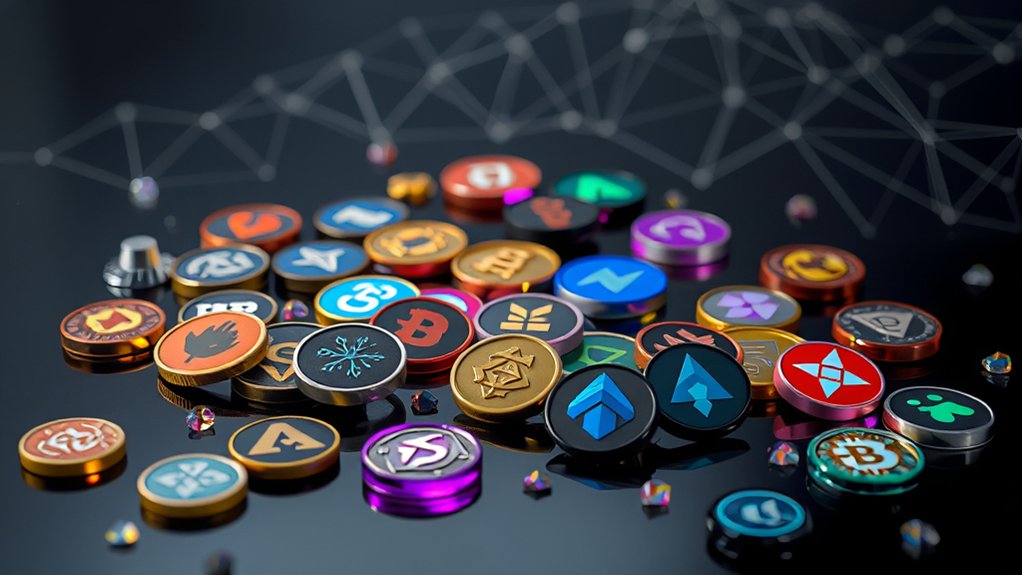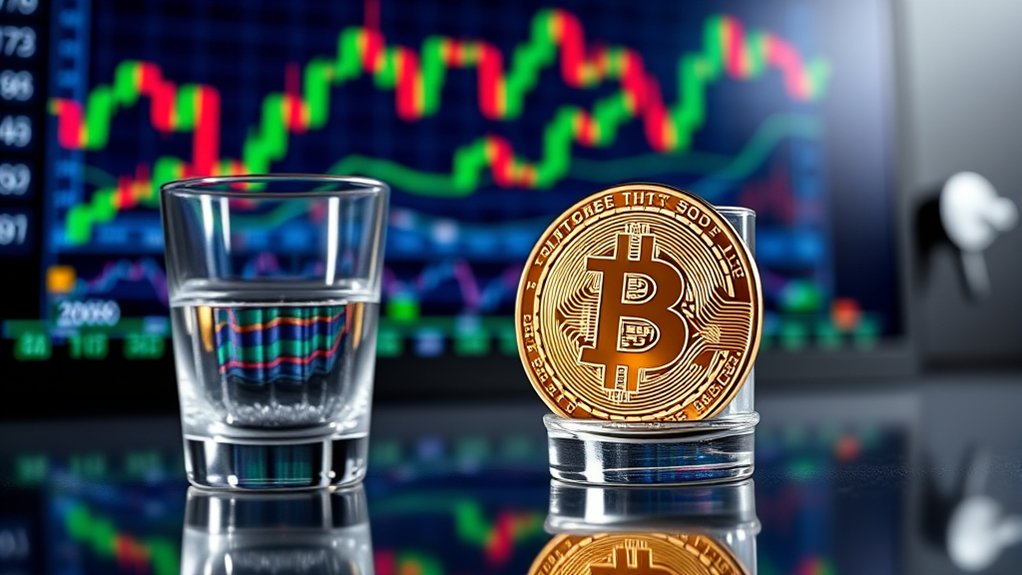Altcoins are basically any cryptocurrency that’s not Bitcoin. They aim to fix what Bitcoin kinda messed up. Think faster transaction speeds, better privacy, and wild new features. Since Namecoin debuted in 2011, the chaos just exploded. It’s a mad, competitive market with new players popping up all the time. Some altcoins are gems, others, well, not so much. The whole scene is unpredictable and full of surprises. Stick around to explore what makes these coins tick.

In a world where Bitcoin reigns supreme, altcoins are like that quirky cousin who shows up at family gatherings—often overlooked but sometimes bursting with surprises. The term “altcoin” is a mashup of “alternative” and “coin,” referring to the myriad cryptocurrencies that aren’t Bitcoin. These coins aim to fix what Bitcoin can’t. You’ve got stablecoins to fight volatility, utility tokens for access to services, and security tokens that represent actual ownership. It’s a wild world out there, with tens of thousands of altcoins competing for attention. Understanding cryptocurrency exchanges can help you navigate this landscape more effectively.
The first altcoin, Namecoin, made its debut in April 2011, riding on Bitcoin’s coattails. Early altcoins were basically Bitcoin clones but evolved quickly to introduce new features. Innovation, meet chaos. As the altcoin market grew, so did its diversity. Some altcoins tout faster transaction speeds; others boast enhanced privacy features. They’ve become a breeding ground for technological experimentation, which is both exciting and risky. The first notable altcoin, Litecoin, was launched in 2011 to enhance transaction speed.
The altcoin landscape exploded after Namecoin, evolving from clones to innovative contenders, each with unique features and risks.
Now, let’s talk differences. Altcoins aren’t just wannabe Bitcoins. They use various blockchain technologies and consensus mechanisms—proof-of-stake, anyone? Many have specific use cases, unlike Bitcoin, which is mostly a digital store of value. Additionally, many altcoins are characterized by high volatility that can lead to rapid price fluctuations. And let’s not forget—altcoins can be super volatile. It’s like a rollercoaster ride without the safety harness. For those who dare to invest, understanding the purpose and tech behind an altcoin is vital.
Trading altcoins is easier than ever with numerous exchanges available. But watch out! You’ll need specialized wallets to store these digital gems. Platforms like BitFlyer make it simple to trade popular altcoins like Ethereum and Litecoin.
Frequently Asked Questions
How Do I Choose the Right Altcoin to Invest In?
Choosing the right altcoin? It’s like picking a favorite child—good luck with that!
Look for market cap; bigger usually means less craziness. Check the trading volume; high means less chance of being played.
Assess the tech—does it solve problems? A solid team matters too; if they’re sketchy, run.
Keep an eye on news; it can make you rich or poor overnight.
And hey, diversify! Don’t put all your eggs in one basket.
What Are the Risks Associated With Investing in Altcoins?
Investing in altcoins? Buckle up. The risks are real. Prices swing wildly—one tweet can send them plummeting.
Regulations? Good luck keeping up. Governments change rules like socks.
Then there’s the tech side—bugs and hacks lurk everywhere.
And let’s not forget scams; some projects are pure smoke and mirrors.
Low liquidity? Perfect for price manipulation.
If someone makes it sound easy, they’re probably selling you a dream. Proceed with caution.
Are All Altcoins Based on Blockchain Technology?
Not all altcoins are based on blockchain tech, but most are.
Some try to be cool and reinvent the wheel, while others stick close to Bitcoin’s blueprint.
Sure, they can fork and tweak things, but at the end of the day, many still rely on blockchain.
It’s like the hipster who claims to be unique, yet wears the same vintage shirt as everyone else.
How Do Transaction Fees Compare Between Bitcoin and Altcoins?
Transaction fees between Bitcoin and altcoins are like comparing apples to, well, much cheaper apples.
Bitcoin’s fees range from $2 to $10, especially when the network’s crowded. Ouch!
Meanwhile, altcoins like XRP and Litecoin flaunt fees below a buck. We’re talking cents here—XRP is a mind-blowing $0.0002.
Low fees? Yeah, they lure merchants. Fast transactions? That’s the cherry on top. Who wouldn’t want that?
Bitcoin’s just not cutting it anymore.
Can Altcoins Be Used for Everyday Purchases Like Bitcoin?
Can altcoins be used for everyday purchases? Sure, if you enjoy living on the edge.
While some altcoins promise faster transactions and lower fees, they often stumble on volatility and brand recognition. Good luck finding a store that accepts them!
Bitcoin has the market cap and stability, making it the go-to.
Altcoins? They’re like the quirky cousin at family gatherings—interesting, but you wouldn’t trust them with your groceries.





